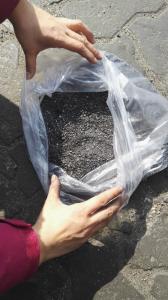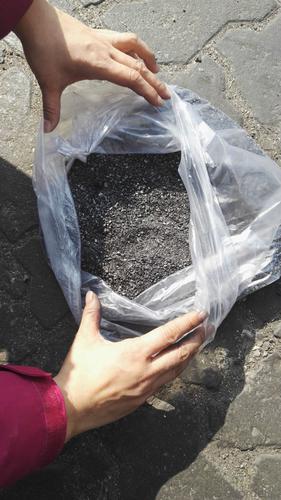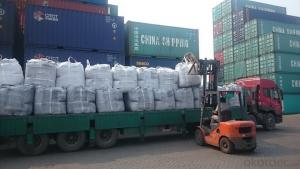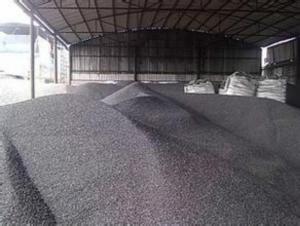GPC with lower N 0.03% max in Low VM 1.5%max
- Loading Port:
- Tianjin
- Payment Terms:
- TT OR LC
- Min Order Qty:
- 21.7
- Supply Capability:
- 5070 m.t./month
OKorder Service Pledge
OKorder Financial Service
You Might Also Like
Introduction:
GPC has good characteristics with low ash, low resistivity, low sulphur, high carbon and high density. It is the best material for high quality carbon products. It is used as carbon additive in steel industry or fuel.
Features:
1.Our strong team provide you reliable service that make you feel purchasing is more easier
2. We ensure that we can supply capability with competitive price.
3. Work strictly to guarantee product quality,
it is playing more and more important role in the industry
Specifications:
F.C.% | 95MIN | 94MIN | 93MIN | 92MIN | 90MIN | 85MIN | 84MIN |
ASH % | 4MAX | 5MAX | 6 MAX | 6.5MAX | 8.5MAX | 12MAX | 13MAX |
V.M.% | 1 MAX | 1MAX | 1.0MAX | 1.5MAX | 1.5MAX | 3 MAX | 3 MAX |
SULFUR % | 0.3MAX | 0.3MAX | 0.3MAX | 0.35MAX | 0.35MAX | 0.5MAX | 0.5MAX |
MOISTURE % | 0.5MAX | 0.5MAX | 0.5MAX | 0.5MAX | 0.5MAX | 1MAX | 1MAX |
Pictures
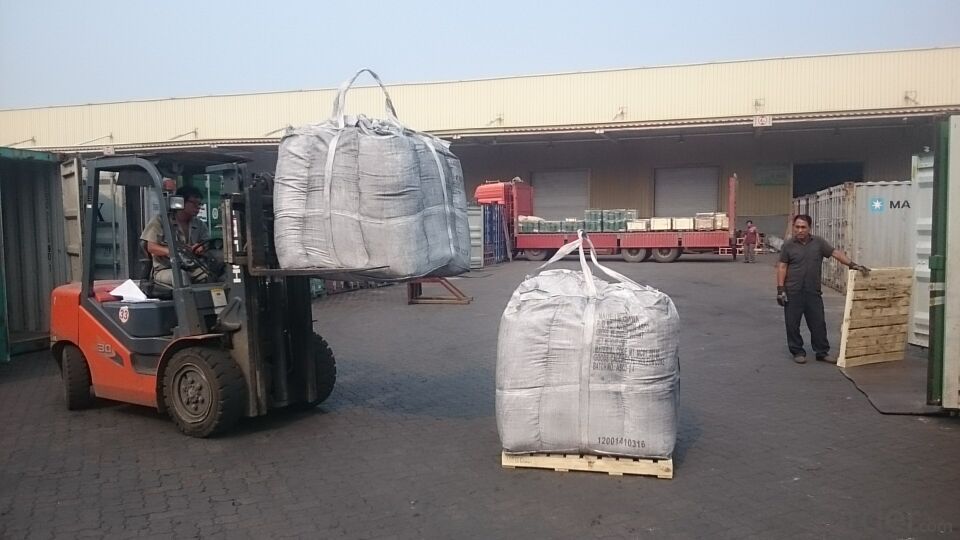

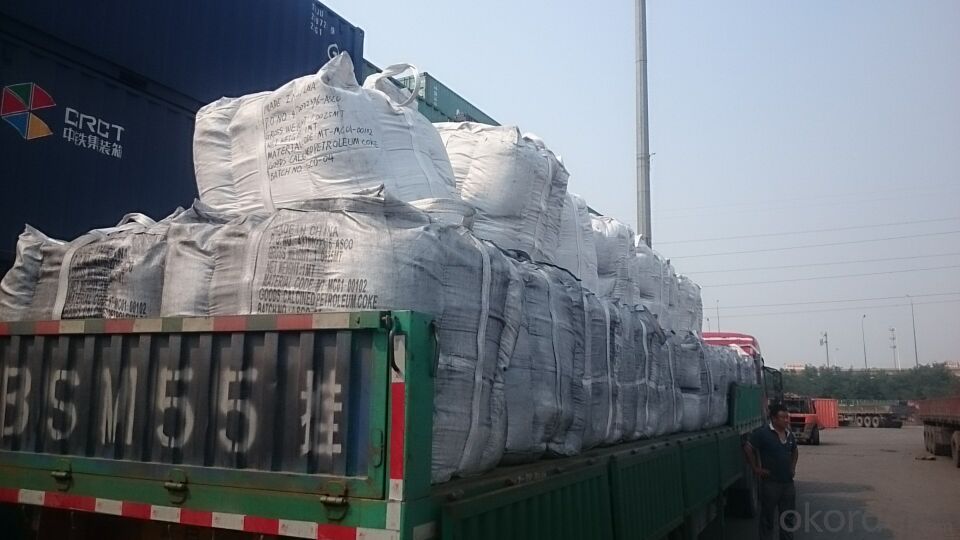
FAQ:
1. Your specification is not very suitable for us.
Please offer us specific indicators by TM or email. We will give you feedback as soon as possible.
2. When can I get the price?
We usually quote within 24 hours after getting your detailed requirements, like size, quantity etc. .
If it is an urgent order, you can call us directly.
3. Do you provide samples?
Yes, samples are available for you to check our quality.
Samples delivery time will be about 3-10 days.
4. What about the lead time for mass product?
The lead time is based on the quantity, about 7-15 days. For graphite product, apply Dual-use items license need about 15-20 working days.
5. What is your terms of delivery?
We accept FOB, CFR, CIF, EXW, etc. You can choose the most convenient way for you. Besides that,
we can also shipping by Air and Express.
it is playing more and more important role in the industry
- Q: There is a graphite mine, looking for three experts engaged in mineral processing industry asked. They say earthy graphite, and the answer to the taste is quite different. Some say that the fixed carbon content of 15, and some say graphite grade 90%. The same sample. Some people say that very valuable, and some say that the grade is too low, worthless. I'm all confused. What do you mean by graphite grade and fixed carbon?
- The taste of graphite powder refers to its purity, that is, the amount of carbon; fixed carbon content refers to the removal of water, ash and volatile residues, it is an important indicator of the use of coal. The two are essentially different
- Q: What is carbon neutral?
- Carbon neutral refers to achieving a state where the net carbon emissions released into the atmosphere are balanced out by an equivalent amount of carbon removal or offsetting. This is typically achieved by reducing greenhouse gas emissions and investing in projects that remove carbon dioxide from the atmosphere, resulting in no net increase of carbon dioxide levels.
- Q: What are the advantages of carbon-based solar cells?
- There are several advantages of carbon-based solar cells that make them a promising technology for renewable energy production. Firstly, carbon-based solar cells are lightweight and flexible, which makes them highly versatile in terms of deployment options. They can be integrated into various surfaces, such as building facades, windows, or even clothing, expanding the possibilities for solar energy generation. Secondly, carbon-based solar cells have a low environmental impact compared to traditional silicon-based solar cells. The production process of carbon-based solar cells usually involves less energy consumption and fewer toxic materials, reducing the overall carbon footprint of the technology. Additionally, carbon-based solar cells have a shorter energy payback time, meaning they reach the point of generating more energy than it takes to produce them faster than silicon-based solar cells. Another advantage of carbon-based solar cells is their potential for low-cost manufacturing. Carbon-based materials, such as organic polymers or perovskites, can be produced through cost-effective techniques like solution processing or printing methods. This scalability and affordability make carbon-based solar cells an attractive option for large-scale deployment, which can help accelerate the global adoption of solar energy. Furthermore, carbon-based solar cells have the potential for improved performance in low-light conditions. Due to their unique properties, such as the ability to absorb a broader range of light wavelengths, they can generate electricity even in cloudy or indoor environments. This makes carbon-based solar cells suitable for a wider range of applications, including indoor electronics, wearable devices, or even integration into urban infrastructure. Lastly, the biodegradability of some carbon-based materials used in solar cells makes them more environmentally friendly. As the world moves towards a circular economy and strives for sustainable solutions, the ability to recycle or dispose of solar cells without causing harm to the environment becomes increasingly important. In summary, carbon-based solar cells offer advantages such as flexibility, low environmental impact, low-cost manufacturing, improved performance in low-light conditions, and biodegradability. These advantages make them a promising technology for realizing a sustainable and widely accessible solar energy future.
- Q: Excuse me, carbon steel, carbon steel pipe, seamless steel pipe, spiral steel pipe, what is the difference?
- These nouns do not seem to be a method of division.Carbon steel pipe: refers to the pipe material is carbon steel, from the material on the pipeline division. A pipe that is different from stainless steel pipes and other materials;Carbon steel plate: refers to the pipe rolls are made of carbon steel, divided from making method. It is different from seamless steel tube and spiral steel tube.
- Q: How does carbon affect the formation of earthquakes?
- Carbon does not directly affect the formation of earthquakes. Earthquakes are primarily caused by the movement of tectonic plates, which are large sections of the Earth's crust that float on the semi-fluid layer below. These plates can collide, slide past each other, or move apart, causing stress to build up along the plate boundaries. When the stress becomes too great, it is released in the form of an earthquake. However, carbon can indirectly impact the occurrence of earthquakes through its role in the Earth's carbon cycle and its contribution to climate change. Carbon dioxide (CO2) is a greenhouse gas that is released into the atmosphere through various human activities, such as burning fossil fuels. This excess CO2 in the atmosphere leads to global warming and climate change. Climate change can have several effects on the Earth's crust, some of which may indirectly influence seismic activity. For example, the melting of glaciers and polar ice caps due to global warming can lead to changes in the distribution of mass on the Earth's surface. This redistribution of mass can cause the Earth's crust to adjust, leading to increased stress along fault lines and potentially triggering earthquakes. Additionally, changes in precipitation patterns and the hydrological cycle caused by climate change can affect groundwater levels and pore pressure within rocks. These changes in water content can alter the strength and stability of fault lines, potentially making them more prone to slipping and causing earthquakes. It is important to note that the direct impact of carbon on earthquake formation is minimal compared to the primary factors such as plate tectonics. However, the relationship between carbon emissions, climate change, and seismic activity is an area of ongoing research and scientific investigation.
- Q: How does carbon impact the prevalence of tropical storms?
- Carbon, specifically in the form of carbon dioxide (CO2) emissions, plays a significant role in impacting the prevalence of tropical storms. The increase in atmospheric CO2 levels due to human activities such as burning fossil fuels, deforestation, and industrial processes has led to the phenomenon known as global warming. This rise in global temperatures has several implications for the formation and intensity of tropical storms. Firstly, warmer temperatures cause an increase in the evaporation of seawater, resulting in higher levels of moisture in the atmosphere. Moisture is a crucial factor in the development of tropical storms, as it provides the necessary fuel for their formation and sustenance. With more moisture available, the potential for tropical storms to develop and strengthen is enhanced. Additionally, rising global temperatures lead to the expansion of the warm tropical oceans, providing a larger area for tropical storms to form and intensify. This expansion allows for a greater exchange of energy between the ocean and the atmosphere, further enhancing the potential for storm development. Furthermore, elevated levels of CO2 contribute to ocean acidification, which has detrimental effects on marine ecosystems, including coral reefs. Coral reefs act as natural barriers that protect coastal areas from storm surges and waves generated by tropical storms. However, the acidification of oceans weakens and destroys these reefs, leaving coastal regions more vulnerable to the impacts of storms. Lastly, climate change caused by carbon emissions alters atmospheric and oceanic circulation patterns, which can affect the movement and tracks of tropical storms. Changes in wind patterns and ocean currents may cause storms to deviate from their traditional paths, leading to increased uncertainty and potential impacts on regions that are not typically prone to these events. In summary, carbon emissions and the subsequent global warming they cause have significant impacts on the prevalence of tropical storms. Increased moisture content, expanded warm ocean areas, weakened coastal defenses, and altered storm tracks are all consequences of rising carbon levels, which ultimately contribute to more frequent and intense tropical storms.
- Q: Does anyone know what the definition of carbon storage is in ecology? Thank you
- If there is no clear definition of books on carbon storage in the understanding of ecology of the individual usually refers to the separation of gaseous carbon dioxide from the atmosphere, through the process of ecology carbon fixed, this process mainly refers to the plants convert carbon dioxide into carbohydrates.In addition, there is now another implication: carbon stripping technology will be used to collect carbon dioxide from human emissions into the air separation of the ground floor storage.
- Q: How do humans contribute to carbon emissions?
- There are several ways in which humans contribute to carbon emissions. One significant source of carbon emissions arises from the burning of fossil fuels for electricity, transportation, and heating purposes. This involves the combustion of coal, oil, and natural gas, resulting in the release of carbon dioxide (CO2) into the atmosphere. The use of these fossil fuels is widespread in our everyday lives, from powering our homes and vehicles to manufacturing goods and producing food. Furthermore, deforestation, which is primarily caused by human activities such as agriculture, logging, and urbanization, also adds to carbon emissions. Trees absorb CO2 and release oxygen, so when they are cut down, the stored carbon is released back into the atmosphere. Additionally, industrial processes like cement production and chemical manufacturing also emit significant quantities of CO2. Lastly, the livestock industry, particularly the production of beef and dairy products, contributes to carbon emissions through the release of methane from livestock and the deforestation required to expand grazing areas and cultivate animal feed. In conclusion, human activities directly and indirectly contribute to carbon emissions, underscoring the necessity for collective efforts to mitigate and reduce our environmental impact.
- Q: Learn photography for nearly half a year, has always wanted to buy a tripod, want to buy carbon fiber tripod, what brand is better? The machine is D700+24-70About 3000 is too expensive ~ consider 1000 more just fine. Wage earners!
- In fact, only three foot two brands: brand and other brands of Gitzo
Send your message to us
GPC with lower N 0.03% max in Low VM 1.5%max
- Loading Port:
- Tianjin
- Payment Terms:
- TT OR LC
- Min Order Qty:
- 21.7
- Supply Capability:
- 5070 m.t./month
OKorder Service Pledge
OKorder Financial Service
Similar products
Hot products
Hot Searches
